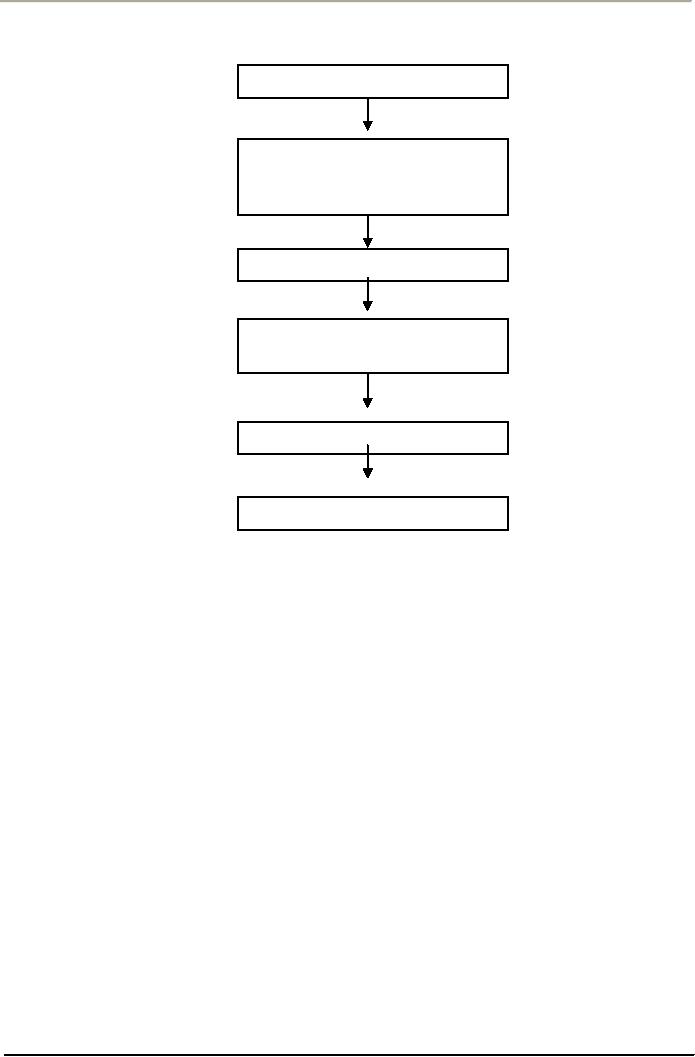 |
DEFINING QUALITY, QUALITY MANAGEMENT AND LINKS WITH PROFITABILITY |
| << HISTORY OF QUALITY MANAGEMENT PARADIGMS |
| LEARNING ABOUT QUALITY AND APPROACHES FROM QUALITY PHILOSOPHIES >> |

Total
Quality Management
MGT510
VU
Lesson
# 11
DEFINING
QUALITY, QUALITY MANAGEMENT AND
LINKS WITH PROFITABILITY
Beyond
Total Quality
By
the end of the 1990s Total Quality
Management (TQM) was considered
little more than a fad
by
many
American business leaders
(although it still retained
its prominence in Europe).
As
the 21st century begins, the quality
movement has matured. New quality
systems have evolved
beyond
the foundations laid by Deming, Juran
and the early Japanese
practitioners of quality.
Some
examples of this
maturation:
�
In
2000 the ISO 9000 series of
quality management standards
was revised to increase
emphasis
on
customer satisfaction.
�
Beginning
in 1995, the Malcolm Baldrige
National Quality Award added
a business results
criterion
to its measures of applicant
success.
�
Six
Sigma, a methodology developed by
Motorola to improve its
business processes by
minimizing
defects, evolved into an
organizational approach that achieved
breakthroughs and
significant
bottom-line results.
�
Quality
Function Deployment was
developed by Y. Akao as a process
for focusing on
customer
wants
or needs in the design or redesign of a product or
service.
�
Sector-specific
versions of the ISO 9000 series of
quality management standards
were
developed
for such industries as
automotive (QS-9000), aerospace
(AS9000) and
telecommunications
(TL 9000 and ISO/TS 16949)
and for environmental management
(ISO
14000)
and also for IT
Sector
�
Quality
has moved beyond the
manufacturing sector into
such areas as service, healthcare,
education
and government.
�
The
CMM levels 1-5 emphasize
quality in IT sector from
the maturity point of view
of
processes
and people.
�
Emphasis
on learning by doing as a means of
continual improvement has
been accepted and has
paved
the way to consider Knowledge as a strategic
resource of production in 21st century work
place
and in work organizations.
�
Discussion
of Knowledge Management and Learning
Organizations are becoming common
in
all
sorts of companies and all
sectors of economy and is rather being
taken as a source of
national
competitive advantage in global interconnected and
interdependent infocom
oriented
world.
The
Concept of Quality
People
define quality in many ways.
Some think of quality as
superiority or excellence, others view it
as
a
lack of manufacturing or service defects,
still others think of
quality as related to product
features or
price.
As study that asked managers
of 86 firms to define quality produced
several dozen different
responses,
including.
1.
perfection
2.
consistency
3.
eliminating
waste
4.
speed
of delivery
5.
compliance
with policies and
procedures
6.
providing
a good, usable
product
7.
doing
it right the first
time
8.
delighting
or pleasing customers
total
customers service and
satisfaction6
9.
39

Total
Quality Management
MGT510
VU
Today
most managers agree that the
main reason to pursue
quality is to satisfy customers.
The
American
National Standards Institute
(ANSI) and the American Society
for Quality (ASQ)
define
quality
as ""the totality of features and
characteristics of a product or service
that bears on its ability
to
satisfy
given needs." The view of
quality as the satisfaction of customer
needs is often called fitness
for
use.
In highly competitive markets, merely
satisfying customer needs
will not achieve success. To
beat
the
competition, organizations often
must exceed customer expectations. Thus,
one of the most popular
definitions
of quality is meeting or exceeding
customer expectations.
What
is Quality?
To
understand total quality, one must
first understand quality. Customers
that are business
organizations
will
define quality very clearly
using specifications, standards, and
other measures. This makes
the point
that
quality can be defined and
measured. Although few
consumers could define
quality if asked, all
know
it when they see it.
This makes the critical
point that quality is in the eye of the
beholder. With the
total
quality approach, customers ultimately
define quality.
People
deal with the issue of
quality continually in their
daily lives. We concern ourselves
with quality
when
grocery shopping, eating in a restaurant,
and making a major purchase
such as an automobile, a
home,
a television, or a personal computer. Perceived
quality is a major factor by
which people make
distinctions
in the market place. Whether we
articulate them openly or keep them in the back of
our
minds.
We all apply a number of criteria
when making a purchase. The
extent to which a
purchase
meets
these criteria determines its
quality in our eyes.
One
way to understand quality as a
consumer-driven concept is to consider the
example of eating at a
restaurant.
How will you judge the
quality of the restaurant? Most
people apply such criteria
as the
following:
♦
Service
♦
Response
time
♦
Food
preparation
♦
Environment/atmosphere
♦
Price
♦
Selection
The
example gets at one aspect of
quality the results aspect.
Does the product or service meet
or
exceed
customer expectations? This is a critical
aspect of quality, but it is
not the only one. Total
quality
is
a much broader concept that
encompasses not just the
results aspect but also the
quality f people and
the
quality of processes.
Chain
Reaction and Profitability
Deming
stresses that higher quality
and improvement in quality leads to
higher productivity, which
in
turn
leads to long-term competitive strength.
The Deming "chain reaction,"
shown in Figure below,
summarizes
this view. This theory
states that improvements in
quality lead to lower cost
because of less
rework,
fewer mistakes, fewer delays
and snags, and better
use of time and materials.
Lower costs, in
turn,
lead to productivity improvements.
With better quality and
lower prices, the firm can achieve
a
higher
market share and thus stay
in business, providing more and more
jobs. Deming states
emphatically
that top management has the
overriding responsibility for
quality improvement.
40

Total
Quality Management
MGT510
VU
The
Deming Chain Reaction
Improve
Quality
Costs
decrease because of less
rework,
fewer
mistakes, fewer delays and
snags,
and
better use of time and
materials,
Productivity
improves
Capture
the market with better
quality
and
lower price
Stay
in business
Provide
jobs and more
jobs
SIPOC
Analysis:
A
fundamental step in improving a
process is to understand how it functions
from a process
management
perspective. This can be seen
through the analysis diagram of the
process to identify the
Supplier-Input-Process-Output-Customer
(SIPOC) linkages.
It
begins with defining the process of
interest and listing the outputs that the
process creates that go
the
customers.
Quality
Terminology:
Quality:
is
fitness for use
(Juran)
Quality
Control: It is a
system where the qualities of products or
services are inspected into to
produce
them
economically to meet the requirement of
the purchaser. It is the operational
technique.
Quality
Assurance: It means to
assure quality in a product so
that a customer can buy it
with
confidence
and use it for a large
period of time with
satisfaction.
According
to ISO, QA means," all those
planned and systematic actions necessary
to provide adequate
confidence
that a product or service will
satisfy given requirements for
quality.
Quality
Management system refers to the
organization's structure for managing
its processes - or
activities
- that transform inputs of
resources into a product or service
which meet the
organization's
objectives,
such as satisfying the customer's
quality requirements, complying to
regulations, or meeting
environmental
objectives.
Total
Quality Management: TQM is both
philosophy and a set of guiding
principles that represent
the
foundation
of a continuously improving organization.
It is the application of quantitative
methods as
well
as human resources to improve the whole
supply chain for customers
and suppliers.
Customer:
Any
one who receives or is
affected by the product, service, or
process.
41

Total
Quality Management
MGT510
VU
External
Customer: The one
outside the company walls or
office/department walls or the next one
in
chain
who receives your product,
service or idea.
Internal
Customers: Staff
members, employees or any one
who works for the interest of a company
or
office
or boss and expects a reward
or salary or benefit from the company or
office or boss.
Investor
Customer: The one
who has invested his
fortune and finance to build a company
and expects
a
good return on his/her
financial capital or fortune.
Shareholders, Stockholders
Social
Customer: The
society at large.
42
Table of Contents:
- OVERVIEW OF QUALITY MANAGEMENT:PROFESSIONAL MANAGERIAL ERA (1950)
- TOTAL QUALITY MANAGEMENT AND TOTAL ORGANIZATION EXCELLENCE:Measurement
- INTEGRATING PEOPLE AND PERFORMANCE THROUGH QUALITY MANAGEMENT
- FUNDAMENTALS OF TOTAL QUALITY AND RATERS VIEW:The Concept of Quality
- TOTAL QUALITY MANAGEMENT AND GLOBAL COMPETITIVE ADVANTAGE:Customer Focus
- TOTAL QUALITY MANAGEMENT AND PLANNING FOR QUALITY AT OFFICE
- LEADERS IN QUALITY REVOLUTION AND DEFINING FOR QUALITY:User-Based
- TAGUCHI LOSS FUNCTION AND QUALITY MANAGEMENT
- WTO, SHIFTING FOCUS OF CORPORATE CULTURE AND ORGANIZATIONAL MODEL OF MANAGEMENT
- HISTORY OF QUALITY MANAGEMENT PARADIGMS
- DEFINING QUALITY, QUALITY MANAGEMENT AND LINKS WITH PROFITABILITY
- LEARNING ABOUT QUALITY AND APPROACHES FROM QUALITY PHILOSOPHIES
- TOTAL QUALITY MANAGEMENT THEORIES EDWARD DEMING’S SYSTEM OF PROFOUND KNOWLEDGE
- DEMING’S PHILOSOPHY AND 14 POINTS FOR MANAGEMENT:The cost of quality
- DEMING CYCLE AND QUALITY TRILOGY:Juran’s Three Basic Steps to Progress
- JURAN AND CROSBY ON QUALITY AND QUALITY IS FREE:Quality Planning
- CROSBY’S CONCEPT OF COST OF QUALITY:Cost of Quality Attitude
- COSTS OF QUALITY AND RETURN ON QUALITY:Total Quality Costs
- OVERVIEW OF TOTAL QUALITY APPROACHES:The Future of Quality Management
- BUSINESS EXCELLENCE MODELS:Excellence in all functions
- DESIGNING ORGANIZATIONS FOR QUALITY:Customer focus, Leadership
- DEVELOPING ISO QMS FOR CERTIFICATION:Process approach
- ISO 9001(2000) QMS MANAGEMENT RESPONSIBILITY:Issues to be Considered
- ISO 9001(2000) QMS (CLAUSE # 6) RESOURCES MANAGEMENT:Training and Awareness
- ISO 9001(2000) (CLAUSE # 7) PRODUCT REALIZATION AND CUSTOMER RELATED PROCESSES
- ISO 9001(2000) QMS (CLAUSE # 7) CONTROL OF PRODUCTION AND SERVICES
- ISO 9001(2000) QMS (CLAUSE # 8) MEASUREMENT, ANALYSIS, AND IMPROVEMENT
- QUALITY IN SOFTWARE SECTOR AND MATURITY LEVELS:Structure of CMM
- INSTALLING AN ISO -9001 QM SYSTEM:Implementation, Audit and Registration
- CREATING BUSINESS EXCELLENCE:Elements of a Total Quality Culture
- CREATING QUALITY AT STRATEGIC, TACTICAL AND OPERATIONAL LEVEL
- BIG Q AND SMALL q LEADERSHIP FOR QUALITY:The roles of a Quality Leader
- STRATEGIC PLANNING FOR QUALITY AND ADVANCED QUALITY MANAGEMENT TOOLS
- HOSHIN KANRI AND STRATEGIC POLICY DEPLOYMENT:Senior Management
- QUALITY FUNCTION DEPLOYMENT (QFD) AND OTHER TOOLS FOR IMPLEMENTATION
- BASIC SQC IMPROVEMENT TOOLS:TOTAL QUALITY TOOLS DEFINED
- HOW QUALITY IS IMPLEMENTED? A DIALOGUE WITH A QUALITY MANAGER!
- CAUSE AND EFFECT DIAGRAM AND OTHER TOOLS OF QUALITY:Control Charts
- STATISTICAL PROCESS CONTROL (SPC) FOR CONTINUAL QUALITY IMPROVEMENT
- STATISTICAL PROCESS CONTROL….CONTD:Control Charts
- BUILDING QUALITY THROUGH SPC:Types of Data, Defining Process Capability
- AN INTERVIEW SESSION WITH OFFICERS OF A CMMI LEVEL 5 QUALITY IT PAKISTANI COMPANY
- TEAMWORK CULTURE FOR TQM:Steering Committees, Natural Work Teams
- UNDERSTANDING EMPOWERMENT FOR TQ AND CUSTOMER-SUPPLIER RELATIONSHIP
- CSR, INNOVATION, KNOWLEDGE MANAGEMENT AND INTRODUCING LEARNING ORGANIZATION